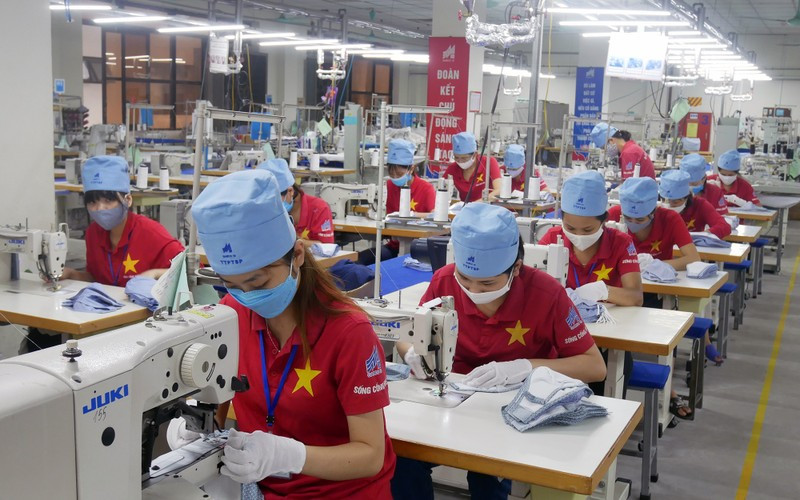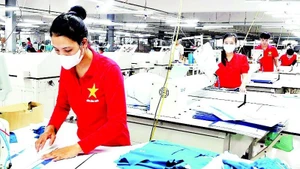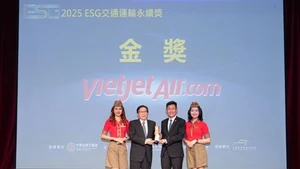Sharp fall
According to Vuong Duc Anh, the chief of office of Vinatex’s board of directors, at the start of 2022 the group already made projections about difficulties facing the sector, but amid the rapid market downturn, all member companies of Vinatex were still shocked at the sharp fall.
In the first three quarters of 2022, the group earned a profit of 1,186 billion VND (over 50 million USD), exceeding the target by 24%, but signs of a market downturn began to appear in August and become clearer in September. In the fourth quarter, garment makers were facing a difficult situation with orders falling sharply while news of loss from Vinatex’s member companies was continuously being reported.
However, thanks to flexible and quick measures, Vinatex managed to generate revenue of 19,535 billion VND (830.2 million USD), up 15%, and earn a consolidated profit of 1,090 billion VND (46.3 million USD), surpassing the target by 14.6%.
Vinatex Chairman Le Tien Truong said in 2022 the group held eight workshops on the market, through which market predictions were promptly updated, and complete and accurate information on the financial and monetary markets was provided so that its members could adjust their production plans accordingly.
Chairman of the Vietnam Textile and Apparel Association (Vitas) Vu Duc Giang affirmed that despite a slowdown in the final three months of 2022, strong growth in the previous three quarters helped the sector to reach an export revenue of 44 billion USD, up 10% from a year earlier. The US remained the largest importer with 18 billion USD, followed by the Republic of Korea with 4.2 billion USD and Japan and China with nearly 4 billion USD each.
Continued pressure
Commenting on market signals, Giang said the number of orders for the first quarter of 2023 dropped by 25-27% due to falling global demand. For now, foreign enterprises are not placing long-term orders for tens of thousands of products but are opting for smaller orders with just a few hundred products instead. Therefore, domestic makers should shift to products with lower value and diversify markets and products to maintain the production pace and growth.
Vinatex Chairman Le Tien Truong said many enterprises are now receiving orders equivalent to only 70-80% of their manufacturing capacity due to reduced consumer demand. This is a short-term period, so it is necessary to determine which assets should be protected in the long run, noted Truong.
The garment sector needs to maintain its position in the supply chain to serve long-established partners, retain the team of highly-skilled workers to keep up with demand when the market recovers, focus on improving productivity and governance, and adopt automation technology to reduce costs.
Truong said Vinatex is concentrating on producing more input materials than end products because materials are always the first step in the greening process as required by the US and Europe. Vinatex is working to manufacture products from recycled and organic materials.
In the past five years, many members of Vinatex have raised the proportion of yarns made from organic components to 30-35% of their total output. At the same time, material production plants are also equipped with solar panels to meet the requirement that 20% of energy used is green energy. These are the new standards of the world, requiring Vietnam to increase its capacity in production preparation, energy and materials to meet the requirements, which will be included in independent audit reports on green development when participating in the global supply chain.
According to Truong, Vietnam’s advances in the past few years have been caught up and even overtaken by rival countries, therefore Vietnam must have new breakthroughs to remain in the world’s top three.
It is forecast that the outlook for Vietnam’s garment sector is less optimistic than in 2022. In the meantime, the garment sector has short production cycles, and the demand is sensitive to income and job situations in the world, so there cannot be a long-term prediction for the whole year. As such, enterprises need to follow market developments closely and apply flexible measures to ensure production efficiency and promote exports.
















